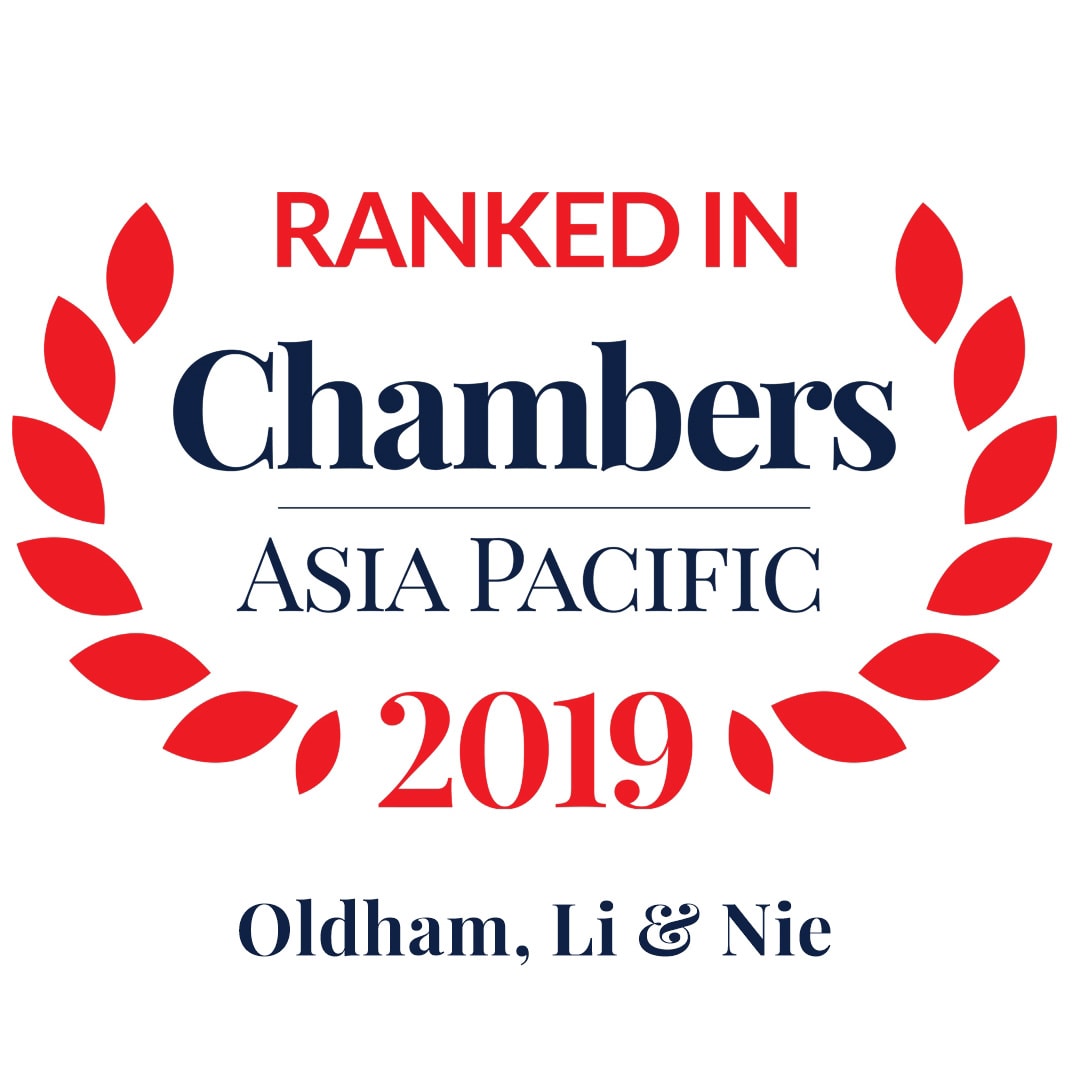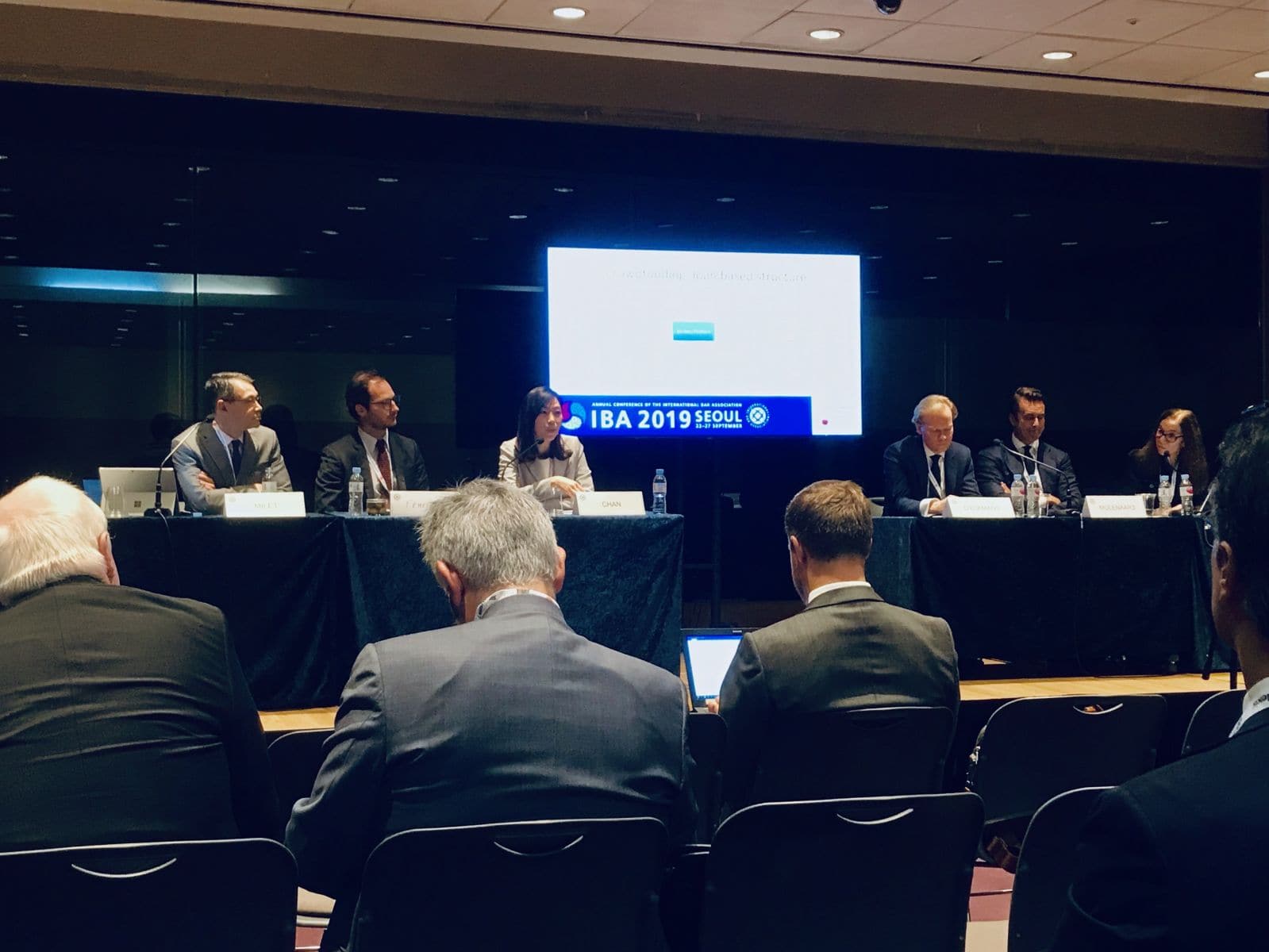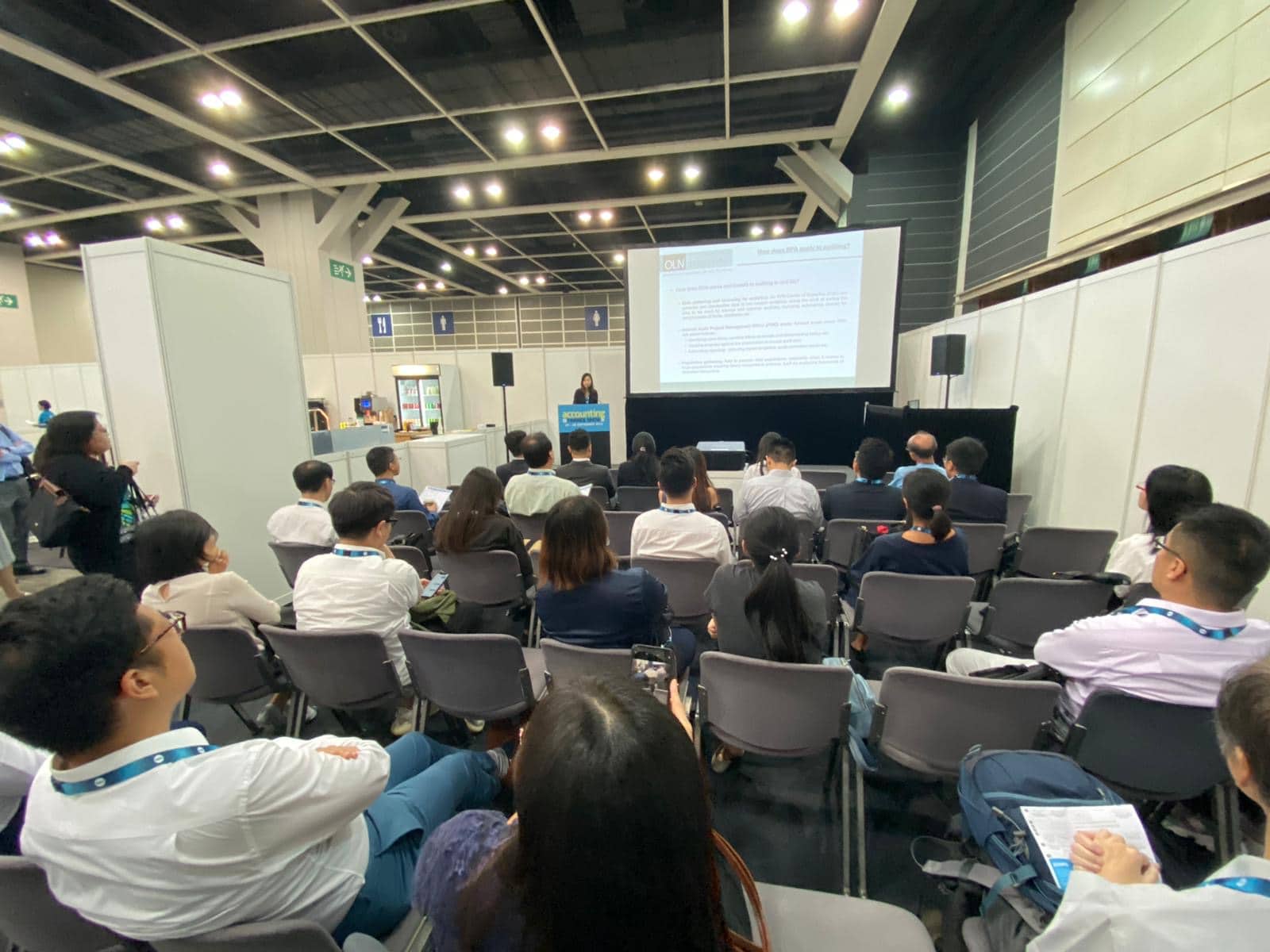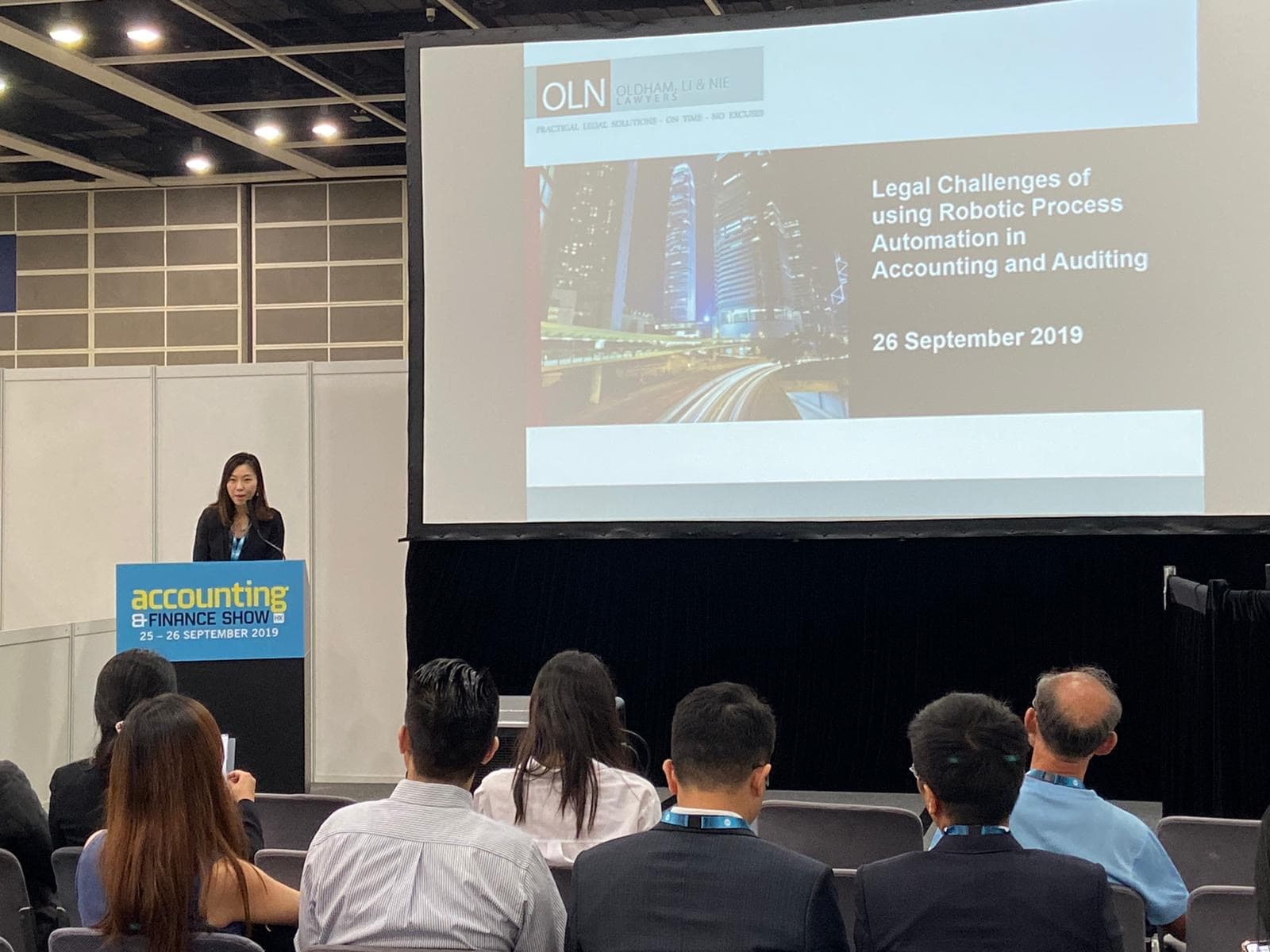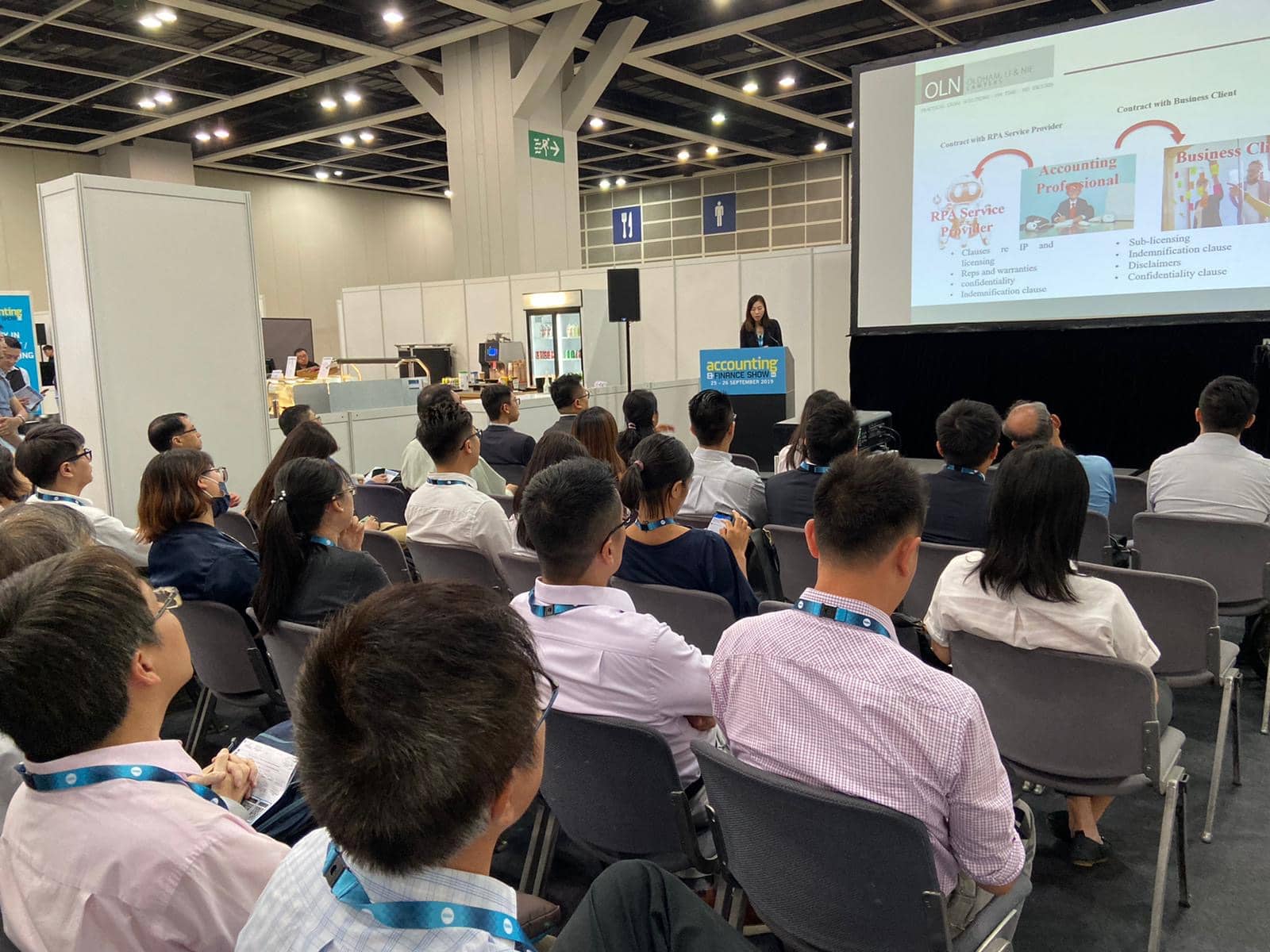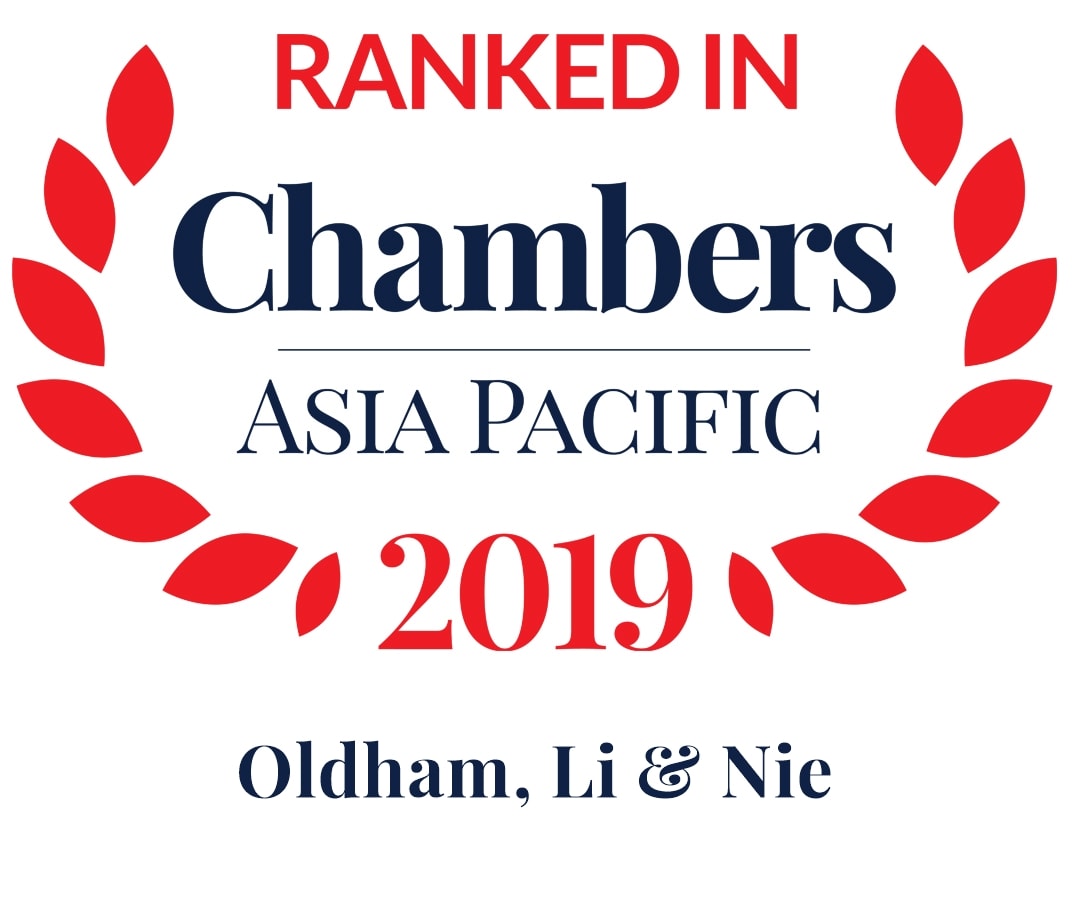
We are glad to announce OLN departments and lawyers have been ranked in Chambers Global and Asia Pacific 2019.
Chambers Global
Departments:
- Corporate / M&A: Independent Hong Kong Firms – Band 2
- Dispute Resolution (International Firms) – Recognised Practitioner
Lawyers:
- Gordon Oldham, Corporate / M&A – Senior Statespeople
- Tracy Yip, Corporate / M&A – Band 2
- Richard Healy, Dispute Resolution – Band 4
- Vera Sung, Intellectual Property – Recognised Practitioner
Chambers Asia Pacific
Departments:
- Corporate / M&A: Independent Hong Kong Firms – Band 2
- Dispute Resolution: Litigation (International Firms) – Recognised Practitioner
- Employment: Hong Kong Law (International Firms) – Band 3
- Family / Matrimonial (International Firms) – Band 3
Lawyers:
- Gordon Oldham, Corporate / M&A – Senior Statespeople
- Tracy Yip, Corporate / M&A – Band 2
- Richard Healy, Dispute Resolution: Litigation – Band 4
- Stephen Peaker, Family / Matrimonial – Band 3
- Vera Sung, Intellectual Property – Recognised Practitioner
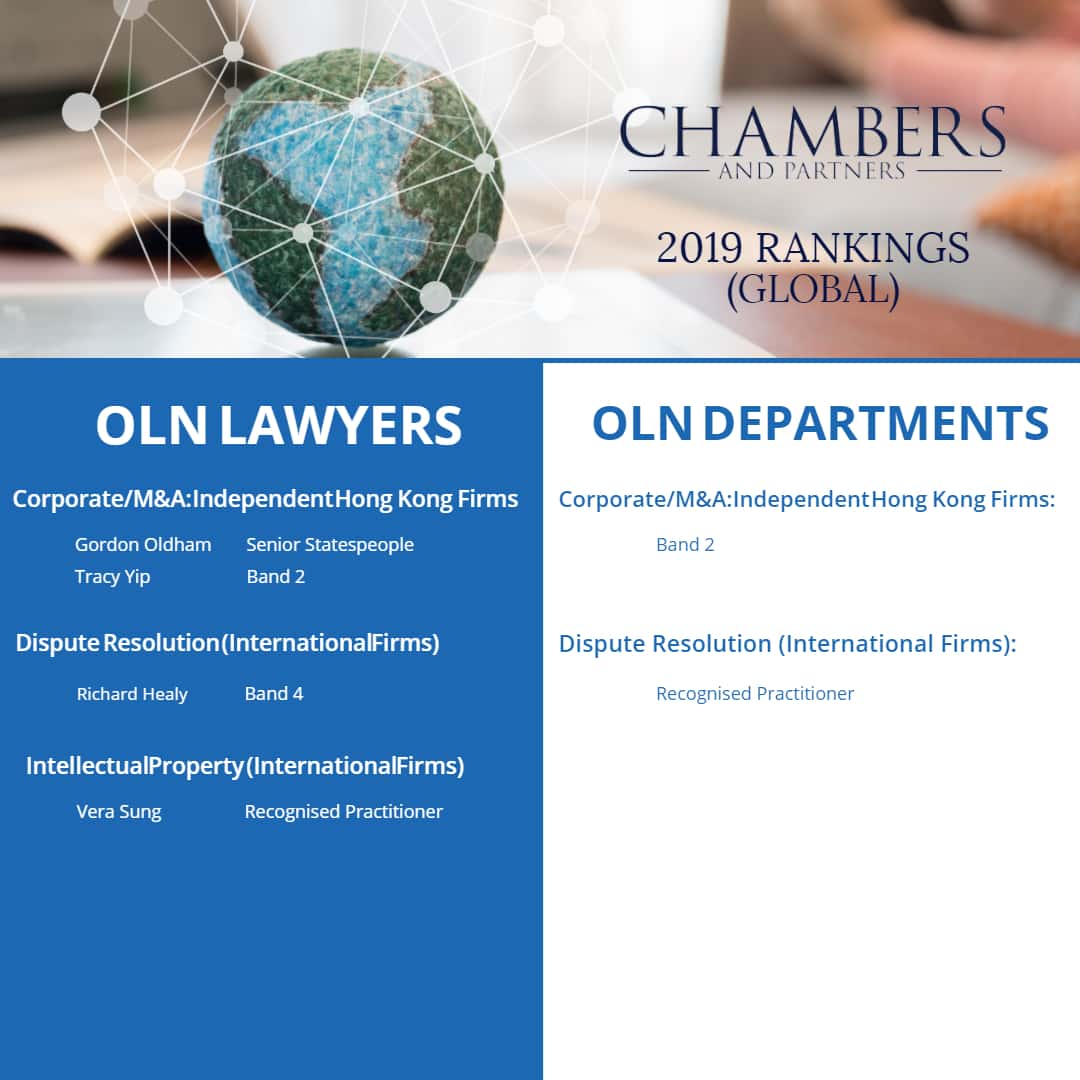
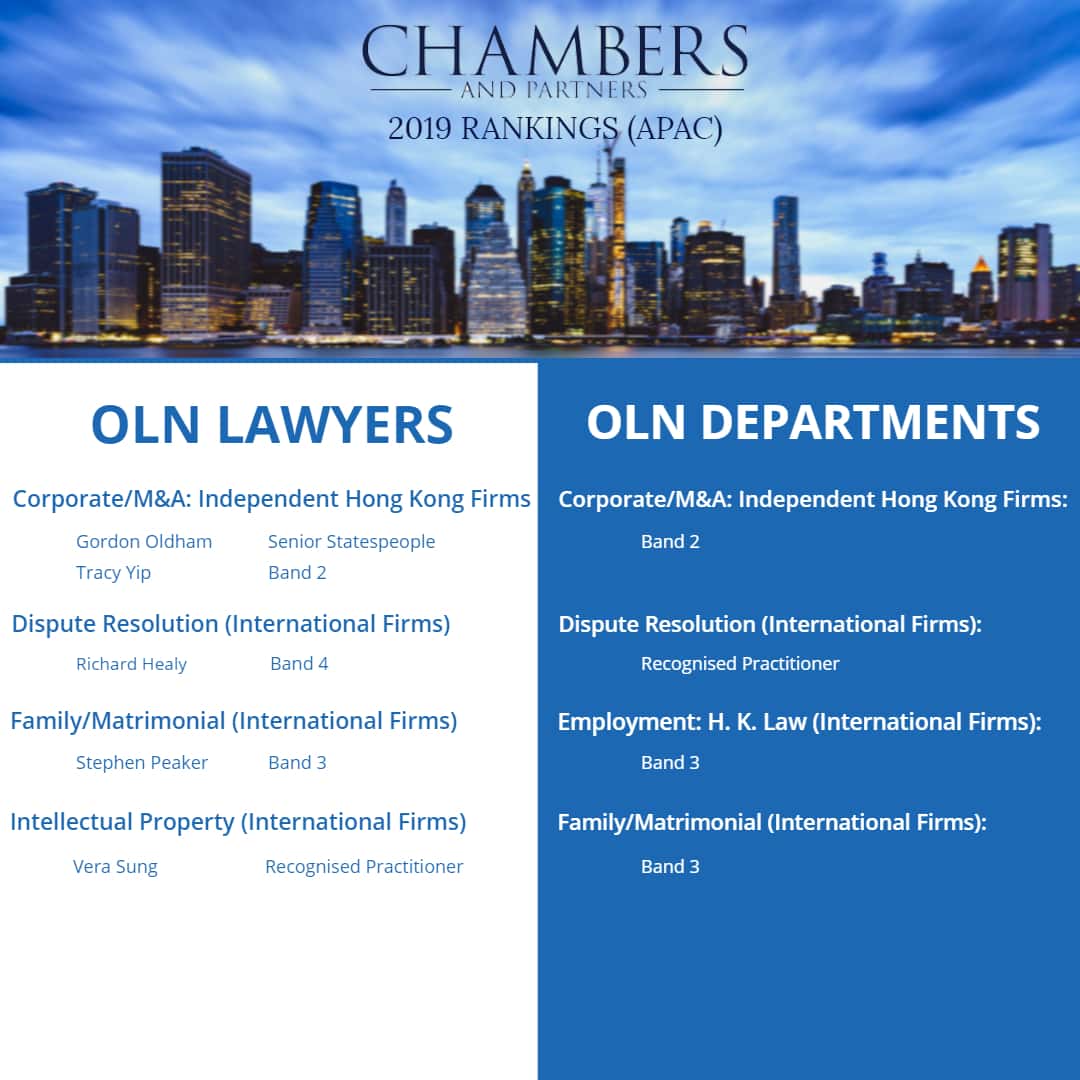
About Chambers Rankings
Chambers rankings offer reliable recommendations on the best law firms and lawyers around the globe and in Asia-Pacific. Chambers has been the leading source of legal market intelligence for over 30 years now. Especially in the Asia-Pacific-wide rankings it covers the most internationally important areas of law, such as Arbitration, Capital Markets, and Corporate / M&A.
 香港中环雪厂街二号圣佐治大厦五楼503室
香港中环雪厂街二号圣佐治大厦五楼503室 +852 2868 0696
+852 2868 0696







